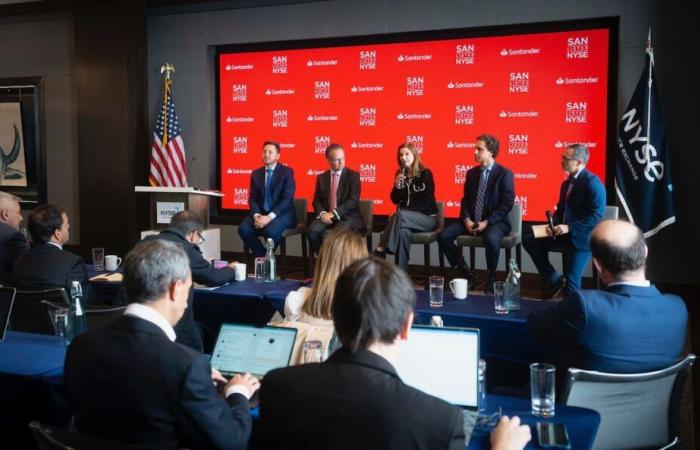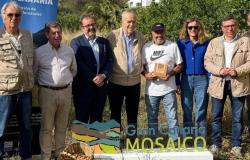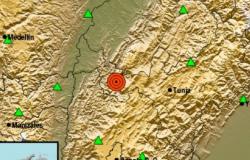New York.-A day after Ana Botín, global president of the Santander group praised the macroeconomic performance of the last months that Argentina had, The economists of the subsidiaries of the Latin American countries anticipated the challenges that the region has In a convulsed world that crosses a commercial reorganization process. “We are in a moment of uncertainty and volatility”Juan Cerruti, chief economist of the Santander group, acknowledged at the beginning of the talk organized in the New York Stock Exchange in full Wall Street.
Cerruti immediately clarified that to understand what is happening is key separate the “noise signals”. He stressed that the global economy has been growing at a rate of 2% or 3% per year and that although the central banks rose the rates, the world continued to grow. “This shows that it is strong and with reservations,” he justified.
A few minutes later, he focused on the opportunity that could generate this context to the countries of Latin America. “The commercial tension generated by the tariff theme is like the chair game, in which nobody knows where it will end, but this region could be a relative winner, ”said the economist.” In addition, central banks are an example of how institutions improved in the region, “he added.
when it was the turn of talking about Argentina, with numbers in his hand, Rodrigo Park, the chief economist of Santander Argentina maintained the Optimistic tone which showed loot with journalists on Tuesday morning. “We are becoming a more boring economy and that is good because the country is more predictable, which will end up promoting investments”, Started its presentation, and complemented with data: in November 2023 the GDP fell 0.7%, the gap Of the parallel exchange rate with the officer was 150%, the interest rate, of 133%, the country risk was in 2000 points and the monthly inflation was 12.8%. Today, the photo is another: the GDP grows 5.7%, the exchange rate gap is less than 5%, the interest rate is 29%, the underlying monthly inflation- eliminating the seasonal components- is 3.2%and the country risk is in the order of the 700 points.
“This shows that Argentina goes through a stabilization plan with a clear diagnosis and a good inertia,” he explained. He also referred to New exchange band regime between $ 1000 and $ 1400: he assured that what is sought is “Eliminate distortions and guarantee predictability”To this is added a fiscal adjustment that brought the primary deficit of -3% of GDP to a 2% surplus of the product in record time, with unusually high social approval levels.
When analyzing the sectors that are tractioning, he stressed that The country has potential in oil & gasagriculture and mining. Also in urban economies that are starting, driven by the growth of wages and credit. “It already represents almost 10% of GDP, when we came from minimum levels of 4%,” he said.
When asked if he considers that Argentina’s reserves are still fragile, he replied that “the good of the program with the IMF is that with the new agreement and the US $23,000 million we are almost doubling the level of reservations.” What does this mean? “The Central Bank has a fire power so that there is a overshooting, You can answer and keep the exchange rate at reasonable levels“He added.
Faced with the future, he raised as challenges the need for the government “Want Chairs” in Congress In this year’s elections that allows him to advance in the necessary structural reforms, such as labor, pension and tax.
-In short, Park insisted that “A house begins to build from the foundations and not from the roof,” And that is what the government has done with the plan. “2025 is the year to stabilize the foundations, as a basis for a sustainable growth agenda, ”he synthesized.
Regarding the impact of the “tariff war”, Cerruti coincided with what Botín said yesterday that “As soon as possible this impasse 90 days, better“Although he emphasized that this time” is a positive sign, because there is room for dialogue and redefine the new rules of world trade. “
Also He acknowledged that the main affected economy will be the American, But it minimized the consequences: “It has solid pillars, it was the strongest in 10 years and the one that most increased its productivity level.”
When referring to Europe, Cerruti said he expects a Moderate growth but with positive perspectives. “It is a philosophical change that after giving it for years your back begins to look at competitiveness and productivity,” he said. By case, Germany, with a ratio of debt of 60% that could increase to 85%, will generate “a dynamic impact.”
The panel was completed with chief economists from the rest of the geographies of the region. Alonso Cervera, the economist of Mexico, said that, in the short term, he sees a certain vulnerability In his country as the effect of the United States, but he was optimistic in the medium and long term, because, While more than 80% of exports go to the neighboring country, they are convinced that this country will not be able to supply everything that Mexico sells.
Brazil and Chile They have other challenges. In the first case, it comes from a growth of between 3% and 3.5% from the pandemic that will now slow down to 2%. “On the other hand, the unemployment rate, which was around 6.4%, will increase to 6.8% this year,” said Ana Vescovi, the chief economist of Santander Brazil, and anticipated that The challenges for 2025 will be monetary policy and growth.
While, for ChileFernando Larrain, Santander economist in that country, Wait for a 2.1% growth for this year and just 1.7% by 2026. “It is not a good sign. The percentages should be higher,” he acknowledged. “The good thing is that it is an issue that is in the center of the political debate in an electoral year,” he concluded.
According to The criteria of






